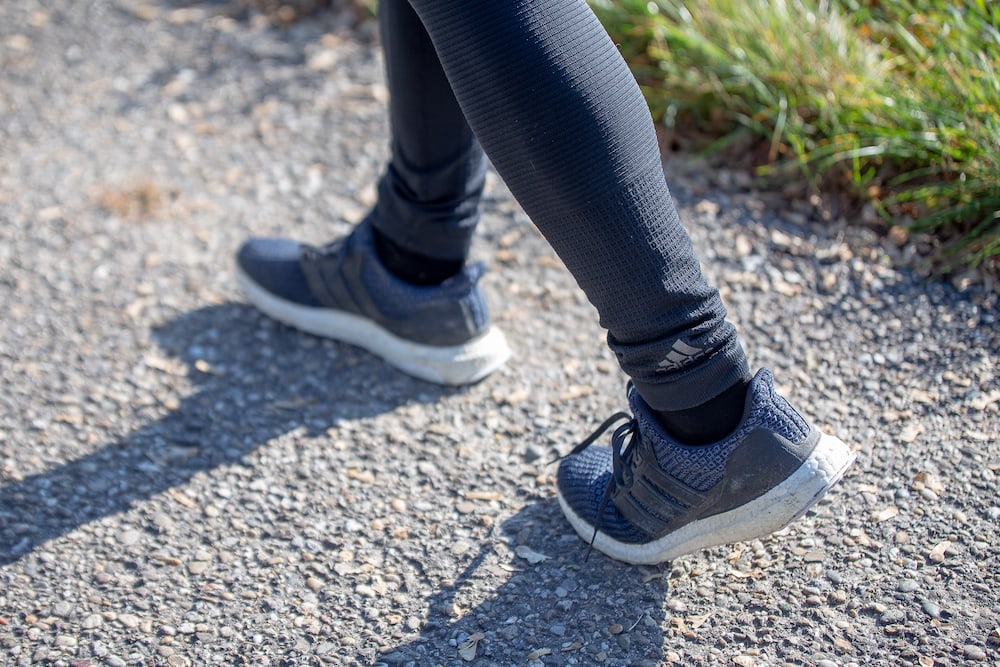|
SEARCH My Blog (Opens in new tab)
And improve your balance and postureI found myself sweating, even though I was only walking up a gently sloping path. The effort surprised me because I run 5km daily and sprint up steeper slopes without too much effort. That day convinced me that walking backwards had a lot to offer. Doing it was challenging the coordination between my brain and body, and using muscles which were otherwise poorly trained and inefficient. That's why I was sweating for such a low level of activity. As well as running daily, I also walk 5km daily, which is part of my recovery routine for the daily running. During my walk, I now find ways to walk backwards - most often up slopes or on the beach. What's with walking backwards?People regularly ask me "why"? I have two different answers. But I just learnt of a reason that is more important to more people than the reasons I give. Walking backwards can help prevent lower back pain - and ease it if you already have it. Yes, "retrowalking" - as I discovered walking backwards is called in some circles - is coming into its own as exercise therapy for lower back pain. The two reasons I have been using up to now when people ask are:
I usually give the first answer to men and the second answer to women. Men more often have sore knees because they are overweight, and women like the idea of a better posture. However, alleviating lower back pain serves a much bigger purpose. Walking backwards helps prevent lower back painThis 2016 study found that walking backwards improves the muscle strength of the lumbar vertebra and can be used in the prevention of lower back pain. Researchers worked with golfers, sports shooters, and bowlers, who all had lower pain. Therapy which improves lumbar stability, lumbar muscle strength and range of motion is effective in treating lower back pain. It seems that retrowalking does a little of each of these. This 2020 study reported that that retrowalking (when added to conventional exercises) helps reduce chronic lower back pain and in improving dynamic balance. Subjects walked backwards on treadmills for 15 minutes three times a week. The above study also reported significant improvements in balance in those subjects that walked backward. For the elderly, a 2020 study in Korea found that a 24-week program of walking backwards improved "the balance ability of the elderly female subjects, enhance the muscle strength of lower extremities, and shorten the neuromuscular response latency of lower extremities, thus effectively promoting physical posture control." Subjects walked backwards on a treadmill set at a 10% slope for 20 minutes, three times weekly. RELATED: Walking Barefoot Improves Your Brain, Balance and Soul, and Reduces Running Injuries RELATED: Keep Your Tendons Healthy And Your Balance Will Look After Itself Seven fantastic other benefits of retrowalkingThose latter research results don't address lower back pain directly, but they do add to the overall evidence of the benefits of retrowalking. Achieving better muscle strength, faster reaction time, and better balance from such a simple activity is phenomenal. Here are some of those benefits, other than reducing lower back pain:
All of the above speak to the unique role that walking backwards plays in challenging our neuromuscular control system. This challenge is the reason I started to sweat when I first tried it. Building lumbar muscular strengthAll of the benefits of walking backwards all derive from the reduced ground reaction forces at contact, limited range of motion at the knee joint (advantageous during knee injury rehabilitation), augmented stretch of the hamstrings muscle group during the stride and the potential of proprioceptive / balance control training. Walking backwards up a gentle slope enhances these results. Retrowalking also improves muscle strength of the lumbar vertebra and reduces the lumbosacral angle and eases or helps prevent lower back pain. Now, when people ask me why I walk backwards, I will first ask them, "do you have lower back pain?". If you have lower back pain, give walking backwards a go. Start gently, start carefully. You don't want to fall over when trying to help you back! If you can walk safely backwards on a treadmill, try doing that for 20 minutes three times weekly . When you feel secure, raise the slope to 10 degrees. When walking, walk backwards a few timesOn my daily walk, I pick three or four gentle slopes, only about 20 to 40m long, and walk backwards up those. If you are doing it mainly for better balance, like me, then try this: rotate your head to look over your left and right shoulder in time with each second step backwards. This movement tunes up the receptors in the neck to better tell the brain where our head is. Good luck - happy retrowalking. RELATED: These Salad Vegetables Best Improve Our Immune Function > More posts to help you with EXERCISES > More posts to help you with DIABETES > If you are a @MEDIUM reader my publication Body Age Buster has hundreds of categorised posts which I have written especially for men and women over 50. Follow me on Quora for more health and fitness tips.
If you valued this article >> Follow me Leave a comment >> Share it >> Stay healthy If you have any questions email me and I will get back to you. Latest: get your free customised fitness plan designed uniquely for you.
|
ChoicesSince I was diagnosed at 50 with Type 2 diabetes I've been learning how to do bone-building fitness training which lowers my age. You can too. It's your choice. Walter Categories
All
Archives
May 2023
|

 RSS Feed
RSS Feed 


